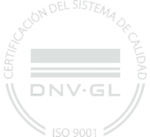Tropicalization of fish fauna of Galician coastal waters, in the NW Iberian upwelling system
The Galician coast, with 1498 km of shoreline, is located in the northwest corner of the Iberian Peninsula. This area is the northern boundary of the Canary upwelling system, at the transition between the subtropical and
subpolar regimes of the North Atlantic, which makes it of particular interest for the detection of marine ecosystem changes. Relationships between the occurrence of non-native marine fishes in this coastal area and sea surface temperature fluctuations are investigated. Information about fish species were collected from published and unpublished material recorded since 1945, and with regular monitoring data since 1983. A total of 50 new additions to the Galician marine ichthyofauna were recorded over the period 1945–2022.
One of these species, Cynoscion regalis (Sciaenidae), is considered an introduced species. Most of the remaining 49 species are the result of latitudinal range expansions, including 15 species that have reached the northern limit of their distribution in the north-east Atlantic. This evidence points towards the tropicalization of the Galician fish fauna.
Satellite sea-surface temperatures over the period 1982–2020 showed that Galician oceanic and coastal waters are, respectively, 0.78 ± 0.01 ◦C and 0.32 ± 0.01 ◦C warmer than 40 years ago. This ocean warming, added to the high productivity of the area and the oceanographic features, support the different ranges of expansion found in marine fishes, reinforcing the process of tropicalization. The increasing presence of new marine fishes in
Galician waters could lead to relevant impacts on this ecosystem, like the emergence of new fish parasites and the increase of top predators and herbivorous fish among others.


